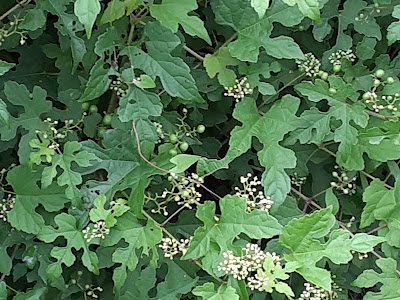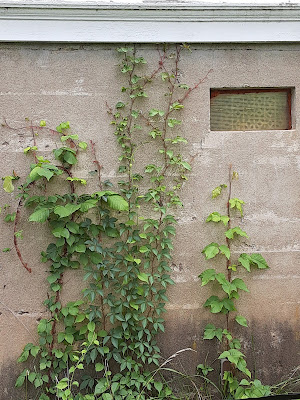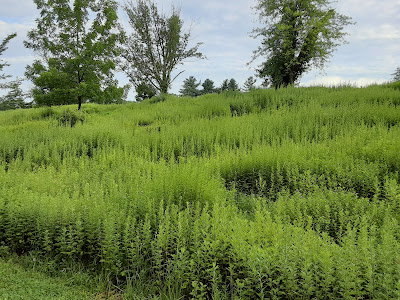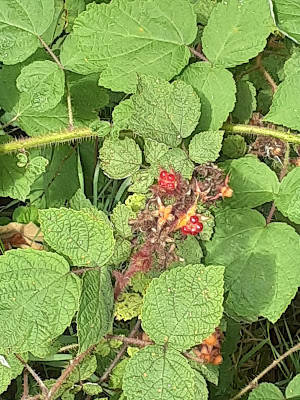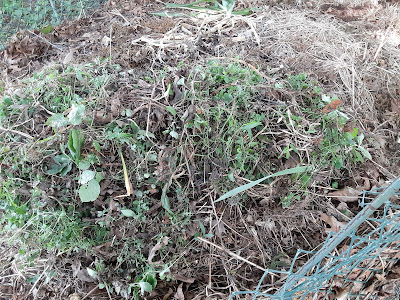When a bird is in an area where you don't expect it, it is considered an "accidental." If it hangs around an area long enough for birders to come from far and wide to see it, it is an "event."
But if it hangs around and only comes out into the open for very short periods during the day, and there are lots of people who still want to see it, that becomes a "stakeout."
Here is the difference between an event and a stakeout. Years ago I learned several northern lapwings, a bird usually found in Europe and Asia, showed up at a farm in New Egypt, New Jersey. These birds caused quite a stir. In their usual territory they like mudflats, open country and, notably, farm land. Based on what I read on the eBird lists, quite a lot of people came to the south Jersey farm to see these birds and had to be reminded to stay in the road and not to block the farm equipment.
 |
| Cormorant watching over the oyster reefs in Barnegat Bay (the lighthouse can be seen on the far right.) (Margo D. Beller) |
Also in New Egypt is a used bookstore my husband (MH) likes to visit, so it was not very hard to get him to agree to drive down there a few weeks after these birds had been reported. Amazingly, the three birds were still around and there were no people other than another couple and us. We saw, we noted, we left.
That was an event.
Meanwhile, in 2019 I was underemployed. I had a lot of time to go chasing after rarities, especially if they were close to home. So it was that a black-headed grosbeak, a western relative of the more common (to me) rose-breasted grosbeak, was coming to a feeder in the backyard of a house not far from Jockey Hollow in Morristown. The homeowners were nice enough to allow people to come to their driveway and watch for the bird at their feeder.
 |
| Sign explaining the Forked River Beach project (RE Berg-Andersson) |
In hindsight, I should've brought a chair because this bird was nowhere to be seen, at first. A man who drove with his wife to NJ from Ohio, as I recall, was nice enough to let me sit in his chair. They'd been there for hours by the time I arrived. We were soon joined by others in chairs or standing behind tripods holding their long-lensed cameras, ready to "shoot" this rarity.
I was lucky. Besides the man letting me sit it was only 30 minutes in that I saw the bird, pointed it out and the cameras started clicking. The bird allowed me to see its handsome black head and orange breast (it was a male) and then I gave the man his chair, thanked him and left.
That was a stakeout.
This is a longwinded introduction to the second stakeout I've ever attended, this one with MH the other week down the New Jersey shore.
 |
| Green heron (RE Berg-Andersson) |
I don't know if it was the weather pattern or global warming but recently there have been many roseate spoonbills found far from their usual breeding territory in the Florida Everglades and along the Gulf of Mexico. The bird, as the name implies, is pink and has a spoon-like bill to scoop up its meal. MH and I have seen one twice - a mature captive bird at Pittsburgh's National Aviary and a juvenile that in 2018 was found by the side of a rain-created pond at a quarry in northwestern New Jersey. More recently these birds have been found in Maine, Connecticut and Minnesota.
Three juveniles were found in Forked River Beach, NJ, earlier this month and that prompted a stakeout. Incredibly, MH was into the idea of traveling to a shore area in summer (on a weekday) to see these birds.
 |
| Semipalmated plover (RE Berg-Andersson) |
It is a long drive from our town to Forked River Beach, especially taking the back roads MH prefers to drive rather than superhighways (me, too) and making pit stops. Once we got to the area we parked near a playground by Barnegat Bay. We could see the lighthouse across the water. In front of us were poles atop which were double-crested cormorants standing guard over oyster reefs.
If the insatiable desire for eating oysters at fashionable New York restaurants, as detailed by Mark Kurlansky in his book "The Big Oyster", didn't kill off the area's oysters, water pollution did. According to the New Jersey Department of Environmental Protection, oysters are a "keystone" species "meaning they are an integral part of a healthy marine ecosystem. Oyster reefs provide vital habitat for many of the commercial and recreational species that fishermen, boaters, and naturalists enjoy in New Jersey’s waters. Oyster reefs are home to a host of species including striped bass, blue crab, and summer flounder, among many others. Additionally, a single adult oyster can filter and clear significant volumes of water each day, helping to improve water quality by cycling excess nutrients."
At the same time the oysters were being depleted, coastlines were being eroded by the constant wave action intensified whenever a major storm or hurricane occurred. And we've had some major hurricanes affecting the shoreline in recent years. Beaches are big business in New Jersey. The Forked River Beach beds were an effort to help the shoreline in this area.
 |
| Great egret, as seen from behind the stakeout. The roseate spoonbills would later be seen in this area. (RE Berg-Andersson) |
There was a paved path to walk past beach houses large and small with lovely gardens. There were benches, monarch butterflies at the flowers and even some birds but no spoonbills and, tellingly, no people looking for them. We were in the wrong place.
Luckily, someone had put a map on Facebook and by comparing that map to our map we found our way to another part of Forked River Beach. This time we found the stakeout. This time we had our chairs and sat a while. MH took pictures as I scanned the mudflats with my binoculars.
There were green herons. There were semipalmated sandpipers and semipalmated plovers. There were Forster's terns and a great egret. There were laughing gulls and herring gulls and very nice people who pointed out birds as they found them.
What there weren't were roseate spoonbills.
That these birds were here at all was an amazing thing. This wetland along the bay was across the street from a massive development of expensive houses, many of which faced or were within walking distance of the water. (Hurricane Sandy's devastation of the Jersey shore in 2012 has not stopped housing development. If anything, it has gotten worse.) The main streets were named for Florida areas. Cross streets were named for birds. (As it happened, the closest cross street to the stakeout was Spoonbill Court.) Thankfully, this wetland had been left alone.
We did not stay more than a half-hour. Seeing these birds would've been nice but they weren't my main reason for us to come here. It was very pleasant to get out of the house, sit by water on a sunny summer day, get a breeze in my face and look for birds. We left to explore areas nearby and eventually started the long trip back. As I later learned, the spoonbills briefly showed themselves about 30 minutes afterwards. The air must've been loud with camera clicks.
As of Aug. 15, they are still around, according to a Facebook post from the area.
Global warming has pushed many birds north. There was a time someone from New Jersey would be lucky to find a Carolina wren, a redbellied woodpecker or a northern cardinal. Now they are common. White ibis, another Everglades bird, has been coming to Ocean City, NJ, for years to breed and now white ibis are being seen in other northeastern areas. Mississippi kites have bred in New Hampshire for years.
 |
| There was a time you'd never see a Carolina wren in the north, especially in winter. But that has changed. (Margo D. Beller) |
I expect the ibises and the spoonbills to head south when winter comes. But what if winters remain so warm there is no cold and no snow to prompt them to leave? I would say there would be no migration but there would be a lot of competition for limited resources between birds that should've migrated south and those that remain all year or are only found in winter.
For the moment, the New Jersey spoonbills are an accidental that created an event that became a stakeout. But they could be a harbinger of things to come.










